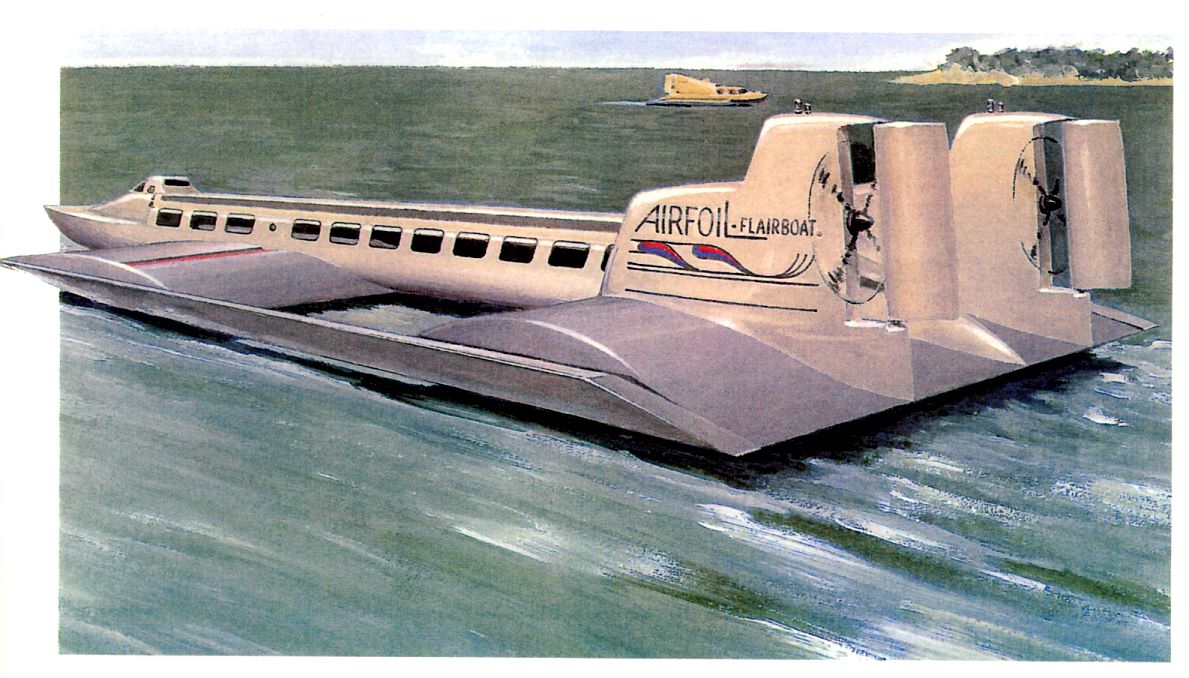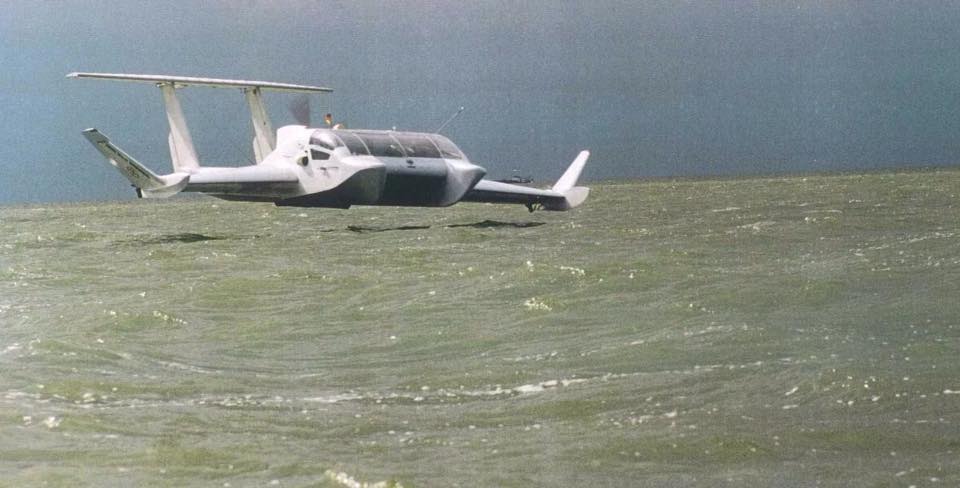 The recent redevelopment and upgrading of Kenya’s Mombasa – Nairobi railway line has revealed a market for faster, affordable intercity passenger transportation services between African cities. Following the recent tragedy of Ethiopian Airlines, the African passenger transportation market might be ready to consider an alternative technology capable of providing affordable, fast travel between several pairs of African coastal cities.
The recent redevelopment and upgrading of Kenya’s Mombasa – Nairobi railway line has revealed a market for faster, affordable intercity passenger transportation services between African cities. Following the recent tragedy of Ethiopian Airlines, the African passenger transportation market might be ready to consider an alternative technology capable of providing affordable, fast travel between several pairs of African coastal cities.
Introduction:
A transportation technology that is currently being developed in locations such as South Korea, West Germany and Singapore offers the promise of competitively-priced, fast passenger travel between such pairs of African cities such as Mombasa – Dar es Salaam, Lobito – Luanda, Maputo – Beira and Lüderitz – Walvis Bay. Unlike fast trains and airline services, the evolving technology requires little in the way of massive infrastructure development such as airports and railway lines. Instead, the technology requires calm water located inside sheltered bays that are readily available along Africa’s extensive coastline, with sufficient distance for the technology.
Unlike a seaplane, the technology uses vastly different wing designs that allow it to fly just a few feet above the water surface, at speeds of over 100-miles per hour while consuming about one-third the energy of an airplane that flies at elevations of 10,000-feet above sea level. The world first became aware of the technology following the end of The Cold War when Russia revealed filmed footage of a vehicle dubbed “The Caspian Sea Monster” that could travel at speeds of 300-miles per hour at an elevation of about 30-feet above the water surface.

Winged Boats:
Despite being built with wings, the technology is built to maritime structural standards and classified as a maritime vessel. The wings operate differently to airplane wings that produce a low-pressure zone or partial vacuum on the upper surface as the vehicle accelerates to higher speed. Ground effect plane wings produce an air flow dynamic between the underside of the wings and the surface below it that causes the vessel to become aloft when the vehicle accelerates to speed. Large versions of ground effect planes can fly above the height of waves.
At equivalent speed, ground effect planes consume about one-third the fuel consumption as propeller drive commercial aircraft, making lower travel prices available to travelers. While the South Korean company called Wing-Ship has built a 50-passenger vehicle, Air-Fish of Singapore and Tandem-Wing of Germany have planes to develop 100-seat and perhaps 400-seat versions of the winged-boat technology. At present, Air Fish can offer a 12-passenger vehicle that could demonstrate the capability of the technology, while Wing-Ship could offer a 50-seat vehicle that could conceivably be used in a demonstration service between a pair of African coastal cities.

Domestic African Service:
There would be scope for winged boats to operate domestic intercity coastal service in three West African countries; Namibia on the 280-mile Walvis Bay – Lüderitz link, Nigeria on the 300-mile Lagos – Port Harcourt link and Angola on the 280-mile Lobito – Luanda link. All 4-coastal cities feature long, narrow bay – channels that are sheltered from large coastal waves and that provide 3 to 6-miles of distance to accelerate a winged boat for it to become airborne. At Namibia, departing winged boats would accelerate in a northbound direction and in a northeasterly direction at Angola before gently turning to travel above ocean.
Upon approach to the destination port, the winged boats would reduce speed to transfer from wings to hulls before entering the port bay. Port officials would need to monitor and control vessel movements to assure that all vessels in the vicinity adhere to proper operational protocols. Modifications to existing maritime terminals would include provision of passenger areas for travelers arriving on and waiting for departure of winged boats. On the east coast, domestic intercity service involving ground effect planes would be possible at Mozambique connecting ports of Maputo, Beira, Inhambane, Pebane, Pemba, Nacala and Angoche Island.

African International Service:
International African intercity passenger coastal service involving ground effect planes could include the 200-mile Mombasa – Dar es Salaam link, the 330-mile Durban – Maputo link, the 200-mile Port Harcourt – Douala link and the 350-mile Port Harcourt – Libreville link. Other routes would include the 600-mile Lagos – Libreville link, the 540-mile Lagos – Douala link, the 600-mile Freetown – Dakar link, the 600-mile Cape Town – Lüderitz link and the 400-mile Bissau – Freetown link. The present design range of ground effect lanes is around 800-miles, equivalent to the Cape Town – Walvis Bay link.
A ground effect plane carrying passengers and parcel freight could be designed to cover the Mombasa – Dar es Salaam distance within under 2-hours. Both coastal cities offer 2-inlets each, Mombasa Harbour and Kilindini Port at Mombasa with Msasani Bay and Port of Dar es Salaam at Dar es Salaam. The sheltered bays at Lüderitz, Walvis Bay, Lobito and Luanda allow for sufficient acceleration distance for ground effect planes to transition from hulls and/or hydroplanes to wings, enhancing prospects for providing intercity transportation service using such technology. Future ground effect planes could travel on battery-electric power.

Economic Aspects:
Fuel represents the dominant cost factor of commercial airline transportation, accounting for 40% to 50% of some airline operational costs. While a commuter aircraft can travel at 500-km/hour at 3,000-m elevation, its energy consumption varies to the cube of its speed. Slowing the vehicle to 250-km/hour could require about 15% of the fuel. A ground effect plane traveling a few metres above ocean at 250-km/hour could require one-third the energy of a commuter aircraft flying at the same speed, requiring 5% to 8% of the fuel as a commuter aircraft of equivalent capacity flying at 500-km/hour.
For journeys of under 350-miles (560-kms) between coastal cities, ground effect planes could offer the combination of competitive travel prices and competitive travel durations. The technology would be especially competitive along such links such as Mombasa – Dar es Salaam, Walvis Bay – Lüderitz, Lobito – Luanda, Durban – Maputo along with Port Harcourt – Lagos, Douala and Libreville. While operation of ground effect planes saves investment in high-speed railway lines and airport runways, some minor investment will be needed to modify existing maritime passenger terminals and dockside areas. Investment will be needed for port area traffic control to assure safe movement of vessels.

Service Demonstration:
At the present time, Wingship of South Korea may be able to provide the 50-passenger WSH-500 ground effect plane for demonstration purposes between a pair of large African coastal cities. A freight ship will have to carry the vehicle on its deck between South Korea and an African port, where either cranes or a heavy-lift helicopter could transfer the vehicle from ship deck on to water. Possible demonstration routes would include Mombasa – Dar es Salaam, Lüderitz – Walvis Bay and Lobito – Luanda. A national airline company might wish to consider including ground effect vehicles in their fleet.
Wingship of South Korea, Airfish of Singapore and Tandem Wing Flairboat of Germany all have plans to build larger ground effect vehicles capable of carrying 100-passengers. The Australian builder Hover-wing has shown that their ground effect craft can travel at an elevation of 3-m above waves of 4-m in height. In African intercity coastal service, ground effect technology would provide the travel speeds equivalent to that of high-speed trains, at a fraction of the investment.
Conclusions:
Several African nations own and operate national airline companies that provide both domestic and international commercial transportation service. Ground effect craft could provide fast transportation service between several pairs of African coastal cities at a fraction of the operation costs and a fraction of the passenger ticket costs compared to airline transportation. At Mombasa, Moi International Airport, Mombasa Harbour and the intercity railway station are located within very close proximity to each other, allowing for convenient intermodal transfer of passengers and freight. Airports at Luanda and Lobito are also located within close proximity of the harbour.
Officials at several African national Ministries of Transportation might wish to evaluate possible future operation of ground effect transportation vehicles to and from main coastal cities, for both domestic and international services. Officials from both Kenya and Tanzania would need to jointly evaluate the possible future operation of ground effect planes between Mombasa and Dar es Salaam.

